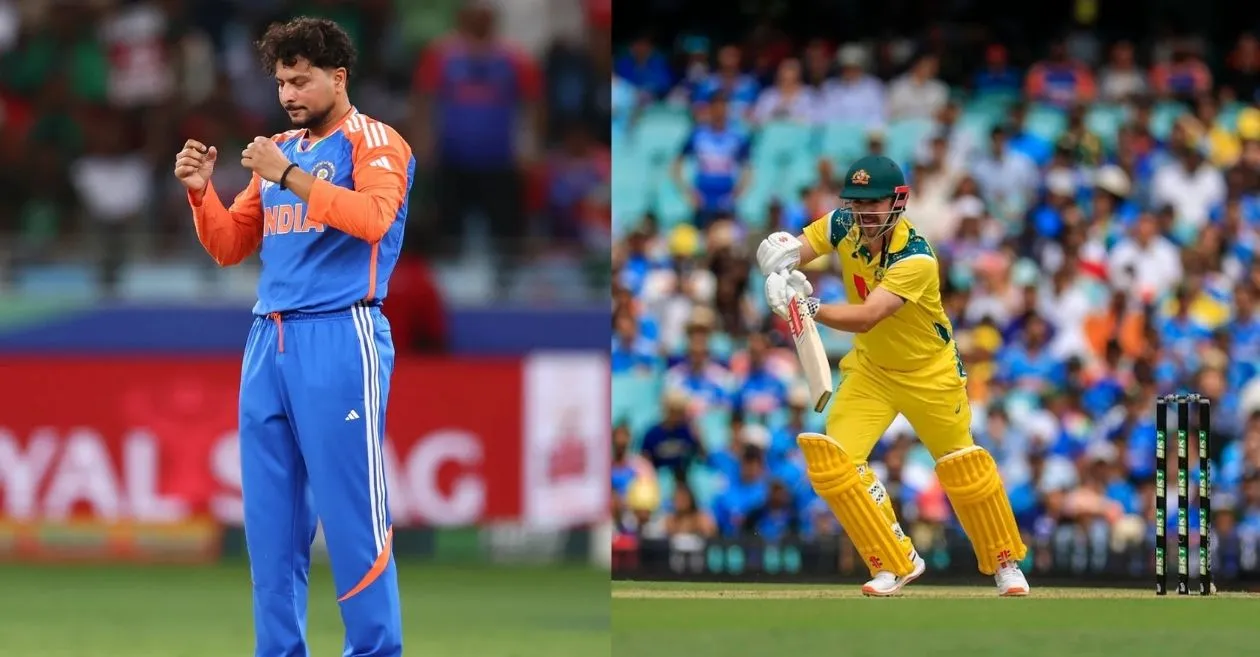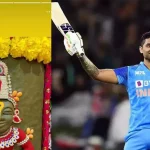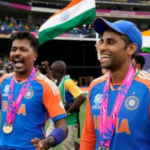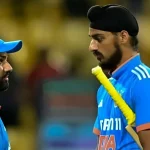The ongoing Australia vs India T20I series has delivered everything that modern cricket promises — drama, high-octane performances, strategic surprises, and now, two headline-making player withdrawals that underline a growing trend in the global cricketing landscape.
As the series heads toward its decisive stage with fixtures lined up at Gold Coast and Brisbane, both teams find themselves not only battling for the trophy but also recalibrating their priorities ahead of a packed international calendar.
While the early matches provided contrasting results and fiery performances, it’s the latest squad changes — Kuldeep Yadav’s release from the Indian T20I squad and Travis Head’s withdrawal from the Australian lineup — that have shifted focus from the boundary lines to the boardrooms.
These decisions, influenced by long-term planning and player workload management, signal how even the most riveting bilateral T20 series can sometimes become a stepping stone toward the “bigger picture” — the Test arena.
A Rainy Start and a Rapid Turnaround: The Series So Far
The five-match T20I series began under wet skies in Canberra, where the opening match was washed out without a ball being bowled. Both teams were eager to start on a strong note after a grueling cricketing year, but nature had other plans.
Australia bounced back in emphatic style in the second T20I at the Melbourne Cricket Ground (MCG). Their bowlers, led by Josh Hazlewood’s fiery spell of 3/13, ripped through India’s top order, restricting them to a modest total. In response, the hosts chased down the target inside 14 overs, sealing a commanding four-wicket win.
However, India struck back with equal force in the third T20I at Hobart, turning the contest on its head. Chasing a challenging total of 186, the Men in Blue pulled off a thrilling five-wicket victory — thanks to explosive middle-order batting from Suryakumar Yadav and Rinku Singh. The result leveled the series 1-1, setting up a high-stakes finish in the remaining two matches.
As the action now shifts to the Gold Coast and Brisbane, both sides face new tactical challenges — not just on the field but also in how they manage their squads amid overlapping international and domestic commitments.
Kuldeep Yadav Released from India’s T20I Squad: Focus Shifts to South Africa Tests
In one of the series’ most talked-about developments, the Board of Control for Cricket in India (BCCI) announced that Kuldeep Yadav, India’s premier left-arm wrist spinner, has been released from the remainder of the T20I series.
The decision, according to a BCCI statement, was made “to facilitate his preparation for India’s upcoming Test series against South Africa”, which begins on November 14. Kuldeep has been drafted into the India A squad for their second unofficial Test against South Africa A in Bengaluru, starting November 6.
“Providing valuable red-ball match practice ahead of the South Africa tour is part of our strategic workload and preparation plan,” the BCCI noted.
“Kuldeep will benefit from bowling extended spells in red-ball conditions.”
This marks a continuation of India’s proactive approach to Test readiness, especially when upcoming series are played in pace-friendly overseas conditions. For a spinner like Kuldeep — who thrives on rhythm, drift, and control — adapting to the red-ball environment ahead of a challenging South African tour is crucial.
The Logic Behind the Move: Rhythm, Red Ball, and Responsibility
Kuldeep Yadav’s evolution from a white-ball specialist to a genuine all-format contender has been one of India’s most compelling cricketing stories in recent years. After struggling for form and selection consistency between 2019–2021, Kuldeep has made a remarkable comeback across formats.
His success in the 2024–25 home season — including notable Test performances against England and Bangladesh — has reignited belief in his red-ball prowess. The team management, under head coach Rahul Dravid and captain Rohit Sharma, has prioritized keeping their premier bowlers in top form for the longer format.
For India, preparing for South Africa’s fast, bouncy surfaces requires every bowler — spinner included — to be in sync with red-ball demands. In that light, Kuldeep’s early transition from T20 mode to first-class cricket makes perfect sense.
“The idea is to get him bowling longer spells in match scenarios,” said a team insider.
“T20s don’t allow you to bowl 25 overs in a day, and that’s what he’ll need in South Africa.”
With Ravichandran Ashwin’s retirement from Test cricket earlier this year, Kuldeep’s role as India’s premier spin weapon in overseas Tests has grown exponentially. His ability to extract bounce and sharp turn from responsive surfaces makes him a key asset, especially when paired with India’s pace arsenal led by Jasprit Bumrah and Mohammed Siraj.
Australia’s Travis Head Follows Suit: Red-Ball Reset Ahead of the Ashes
Meanwhile, across the dressing rooms, Australia’s Travis Head has also been released from the ongoing T20I series — but for very different reasons.
The dynamic left-hander, who has been a pillar of Australia’s batting across formats, has opted to return to domestic cricket, joining South Australia for upcoming Sheffield Shield fixtures. His goal: to rediscover red-ball form ahead of the iconic Ashes 2025-26, which begins on November 21 in Perth.
Head’s recent form in white-ball cricket has been concerning — no scores above 31 in his last eight innings across T20Is and ODIs. Recognizing the need for a mental and technical reset, both Head and Cricket Australia agreed that a stint in domestic first-class cricket would be the best path forward.
“It’s been a tough few weeks with the bat,” Head admitted in a brief media interaction.
“Sometimes the best way to get back into rhythm is to go back to basics — spend time in the middle, face the red ball, and rebuild confidence.”
Selectors’ Perspective: Prioritizing Test Cricket in a Crowded Calendar
Australian selectors, led by George Bailey, have endorsed this move as part of a broader philosophy emphasizing Test cricket as the pinnacle. With the Ashes on the horizon, the focus is clear — ensuring key players enter the series in peak form and mental readiness.
“There’s no question that T20 cricket is important,” Bailey said, “but the Ashes is something special. We want our players mentally sharp and technically tuned for that challenge. If that means stepping away from a T20 series or two, so be it.”
Head now joins a growing list of Australian players — including Steve Smith, Mitchell Starc, Josh Hazlewood, and Sean Abbott — who have stepped back from T20 commitments to prepare for the Test summer.
The message from Cricket Australia is unmistakable: while T20 leagues dominate headlines and calendars, Test cricket remains the ultimate benchmark of excellence.
Strategic Parallels: India and Australia Play the Long Game
Though operating under different boards and cricketing ecosystems, both India and Australia have shown a strikingly similar approach in recent months — prioritizing long-term Test performance over short-term T20 results.
For India, this aligns with their mission to win a World Test Championship (WTC) title, having finished runners-up in the last two cycles. For Australia, the focus is maintaining their Ashes supremacy and continuing their dominance in the traditional format.
These decisions also highlight the increasing complexity of international scheduling. With global tournaments stacked back-to-back — including the 2026 T20 World Cup and 2027 ODI World Cup — managing player workload has become a chess game in itself.
Tactical Impact: What These Withdrawals Mean for the Series
For India: Adjusting the Spin Combination
Kuldeep’s absence opens up opportunities for Ravi Bishnoi and Axar Patel to take on more responsibility in the spin department. Bishnoi’s attacking leg-spin offers wicket-taking potential, while Axar’s economical left-arm spin complements the pace-heavy conditions in Australia.
The team management may also experiment with Washington Sundar, whose batting depth adds flexibility to India’s middle order. The goal will be to strike the right balance between control and penetration on Australian pitches that traditionally favor pace but can reward spinners who vary their pace and length smartly.
For Australia: Filling the Head-Sized Void
Without Travis Head, Australia lose a crucial power-hitter and left-hand presence in the top order. This may prompt the promotion of Matt Short or Josh Inglis up the batting lineup. Both have the potential to attack early, but replicating Head’s consistency and versatility won’t be easy.
Australia’s bench strength, however, remains robust — thanks to players like Tim David, Marcus Stoinis, and Mitchell Marsh, who can adapt to multiple roles in the batting order.
Balancing Formats: The Modern Cricket Dilemma
The withdrawals of Kuldeep Yadav and Travis Head are not isolated incidents — they represent the modern cricketing paradox. Players today juggle between formats, leagues, and national duties at a relentless pace.
Boards and selectors are increasingly aware that burnout and form slumps can derail long-term objectives. Hence, they now take a more pragmatic approach, allowing stars to step away from one format to fine-tune for another.
Cricket’s evolving ecosystem — driven by T20 leagues but anchored by Test prestige — demands adaptability from both players and administrators. The fact that both India and Australia have made similar calls in the same series reflects a growing maturity in how elite cricket is managed.
Expert Opinions: Strategic or Risky?
Several former cricketers and analysts have weighed in on the developments.
Former India spinner Harbhajan Singh praised the BCCI’s forward-thinking approach:
“It’s smart management. You can’t expect bowlers like Kuldeep to switch from T20 to red-ball Tests overnight. Giving him early exposure in red-ball conditions will help him massively in South Africa.”
Meanwhile, Australian great Ricky Ponting backed Travis Head’s decision to return to Shield cricket, calling it a “classic old-school reset.”
“Sometimes, all a batter needs is a few hours in the middle with the red ball. Head’s game is built on confidence, and this move will bring that back before the Ashes.”
The Road Ahead: Decisive Games Await
Despite the off-field headlines, the India vs Australia T20I series remains finely poised. With both sides level after three games and key players missing, the final two fixtures promise tactical intrigue and fresh match-winners.
For India, emerging talents like Tilak Varma, Rinku Singh, and Bishnoi will be eager to seize their moment. For Australia, the challenge lies in maintaining momentum without their senior pros, relying on the next generation of players to step up under pressure.
Beyond the Boundary — A Vision for the Future
The ongoing T20I series between India and Australia is more than just a bilateral contest — it’s a window into how top cricketing nations are evolving in the era of schedule congestion and multi-format demands.
Both sides are playing the long game. By sacrificing short-term firepower, they’re investing in endurance, balance, and sustainability — qualities essential to thrive in the modern era.
As Gold Coast and Brisbane brace for the final two clashes, the results will matter, but perhaps not as much as the statements made through these strategic calls.
Because in today’s cricket, winning the match is important — but building for the future might just be the ultimate victory.
Please check for information on the best betting sites in India – https://selectory.org/best-betting-sites/















